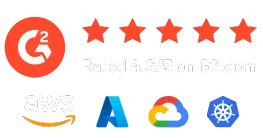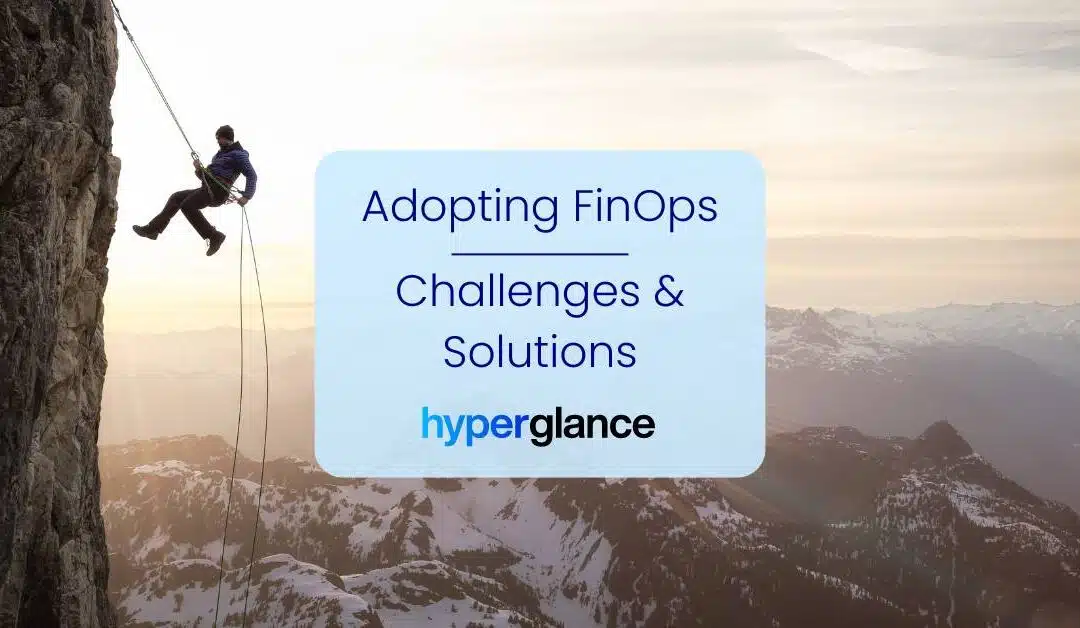The Rise of FinOps
FinOps is a practice essential for managing the complexities of cloud spending. It unites technology, business, and finance teams to ensure efficient and cost-effective use of cloud resources.
The key lies in its real-time monitoring and agile decision-making, aligning cloud expenses with business goals for optimized spending and superior operational efficiency.
This relatively new approach turns cloud investments from a traditional cost center into a strategically managed asset.
🤓 What's the FinOps Framework? Find out in our guide to FinOps.
Understanding FinOps
The core principles of FinOps focus on balancing cost, quality, and speed:
- Collaboration Across Teams: Breaking down silos between finance, technology, and business units to create a unified approach towards cloud spending and resource usage.
- Real-Time Decision Making: Utilizing up-to-date, accurate data to make immediate and informed decisions about cloud investment and management.
- Ownership and Accountability: Ensuring every team member understands and takes responsibility for their part in cloud spending and usage.
- Variable Spending Over Fixed Spending: Embracing the dynamic nature of cloud costs, moving away from traditional fixed budgets to a more flexible model that can adapt to changing needs.
- Business Value Focused: Aligning cloud spending with business outcomes, ensuring that every dollar spent contributes to the overall goals and success of the organization.
- Continuous Improvement and Innovation: Regularly reviewing and adjusting practices to optimize cloud costs, improve efficiency, and stay ahead in a rapidly evolving technological landscape.
These principles are designed to create a disciplined and efficient approach to cloud financial management, ensuring organizations maximize the value of their cloud investments.
🧠 Need to brush up on your jargon? Head over to our FinOps glossary.
Adopting FinOps: Common Challenges
Organizations and FinOps Practitioners face many challenges when adopting FinOps. These include:
- Cultural shift and resistance
- Complexity of cloud pricing models
- Cross-departmental collaboration
- Lack of clear ownership and accountability
- Data overload and visibility issues
- Skill gaps and training needs
- Adapting to continuous change
- Balancing cost, quality, and speed
Getting on top of these challenges early in the adoption process is a key way to ensure successful FinOps adoption and efficient cloud financial management.
In this post, we’ll look at various ways you can overcome these challenges, including:
- Fostering a FinOps Culture: Learn how to cultivate a culture that embraces the FinOps philosophy, encouraging collaboration and a shared understanding of cloud costs across departments.
- Demystifying Cloud Costs: We'll provide insights into simplifying complex cloud pricing models, making it easier for teams to understand, predict, and manage cloud expenses effectively.
- Enhancing Cross-Departmental Collaboration: Discover strategies to bridge the gap between finance, IT, and other business units, fostering a collaborative environment essential for FinOps success.
- Establishing Accountability: Find out how to define ownership and accountability for cloud costs, ensuring everyone knows their role in managing cloud spend.
- Improving Data Visibility and Management: We'll explore tools and practices that enhance visibility into cloud spending and usage data, enabling better decision-making and optimization strategies.
- Adapting to Change: Gain insights into staying agile and responsive to the ever-evolving cloud landscape, ensuring your FinOps practices remain effective and relevant.
- Balancing the Triangle of Cost, Quality, and Speed: Understand how to strike the perfect balance between minimizing costs, maintaining high service quality, and ensuring timely delivery.
By the end of this post, we want you to be armed with practical, actionable solutions to navigate the adoption challenges, paving the way for a successful integration into your organization.
Solutions to Common Challenges
FinOps Training & Education
Training is crucial for successful FinOps implementation, primarily through:
- Skill Development: Offers practical knowledge in finance, operations, and technology specific to cloud management.
- Enhancing Collaboration: Provides a platform for different departments to learn and work together effectively, crucial for FinOps success.
- Staying Updated: Helps teams keep up with the latest cloud technologies and pricing strategies, essential for informed decision-making.
- Standardizing Practices: Ensures a consistent approach across your organization, leading to more predictable and efficient management of cloud resources.
Consider setting up regular training sessions, workshops, and cross-functional meetings to build and maintain FinOps expertise within your team.
Create Your Own FinOps Framework
This is a great example of short-term pain for long-term gain. A key indicator of a failing FinOps adoption is a lack of internal framework.
Here's how you should develop yours:
- Assess Your Current State: Evaluate your current cloud spend, usage patterns, and financial management processes. Understand where you stand in terms of cloud cost efficiency and identify areas for improvement.
- Define Clear Objectives: Establish specific, measurable goals for your FinOps framework. This might include cost savings targets, efficiency improvements, or better alignment of cloud spending with business outcomes.
- Engage Stakeholders: Involve key stakeholders from finance, operations, and technology teams. Their input is crucial for understanding different perspectives and ensuring the framework addresses all relevant aspects.
- Develop a Governance Model: Create a governance structure that defines roles, responsibilities, and decision-making processes. This model should facilitate collaboration across departments and ensure accountability.
- Choose & Implement Tools: Choose appropriate tool(s) for cloud cost management, monitoring, and optimization. Ensure these tools are integrated into your framework and used effectively by the team.
- Create Policies and Procedures: Develop clear policies and procedures for cloud usage and cost management. This should include guidelines for resource provisioning, usage monitoring, and cost optimization strategies.
- Implement Training & Development: Train your team on FinOps principles, your specific framework, and your tools. Continuous learning and development should be part of the framework to keep pace with evolving cloud technologies and practices.
- Monitor, Measure, and Optimize: Regularly monitor your cloud spending and usage. Measure performance against your objectives, continuously optimizing your practices based on these insights.
- Iterate and Improve: Treat your FinOps framework as a living process. Regularly review its effectiveness and adjust it as needed. Always consider changes in tech, business objectives, and market conditions.
- Share Successes and Learnings: Share the successes and learnings within your organization. This not only validates the framework but also encourages a culture of continuous improvement.
Remember, the key to a successful FinOps framework is its alignment with your organization’s specific needs and goals. This approach gives your cloud ops their best chance at supporting your business's broader strategic goals.
🎧 Treat your ears to our list of the best FinOps podcasts
Cross-Functional Collaboration
Fostering a culture of collaboration across finance, operations, and development teams, especially in a FinOps context, is vital for successful adoption. Here are some effective techniques:
- Cross-functional workshops and training
- Joint planning sessions
- Common goals and KPIs
- Regular communication channels
- Integrated reporting systems
- Collaboration tools and platforms
- Recognition and incentives
- Conflict resolution mechanisms
- Executive sponsorship
- Customer-centric approach
Implement these and your organization will develop an integrated approach to managing cloud resources, where finance, operations, and development work together to achieve optimal outcomes.
🤝 Everything you need to know about FinOps-Ops-as-a-Service (FaaS)
Utilize FinOps Tools
With ever-rising cloud costs to contend, there's never been a better time to use a cloud cost optimization & management tool. Best-in-class tools often quickly pay for themselves in bill reductions, let alone time savings.
Here's a closer look at some of the key functions to look for:
Trends, Anomalies & Waste: Comprehensive insights into your cloud spending, helping you to identify trends, anomalies, and opportunities for cost savings across multi-cloud platforms.
FinOps Analysis: In-depth analysis, forecasting, and actionable recommendations to optimize cloud spending, while facilitating effective cost allocation and financial reporting.
Resource Optimization: Suggest resource adjustments, like right-sizing instances and scaling down underutilized services, to align your expenditure with actual usage.
Automated Policy Enforcement: Automation plays a growing role in maintaining cost efficiency, enabling policies that dynamically adjust resources and manage costs based on predefined rules.
Billing Management: Consolidate, audit, and analyze billing data from multiple cloud services, offering clarity and control over your financial commitments.
Performance Monitoring: The dual benefit of monitoring the performance of your cloud services while also providing insights into the cost implications of your operational choices.
Data Analytics & Reporting: Aggregate and analyze data from various sources, offering comprehensive reports and insights for informed strategic decision-making in cost management.
Together, best-in-class FinOps tools, like Hyperglance, form a comprehensive arsenal for businesses to effectively manage and optimize their cloud costs, ensuring a balanced approach between financial prudence and technological innovation.
Conclusion
Navigating FinOps' complexities requires a strategic blend of cross-functional collaboration, continuous education, and adaptive resource management.
From the challenges faced by adopting FinOps to the practical solutions and essential tools, the key lies in creating a cohesive approach that aligns technological resources with financial accountability and operational efficiency.
The close integration of finance, operations, and development teams under the FinOps model streamlines cloud cost management AND fosters a culture of transparency and informed decision-making.
Organizations looking to take full advantage of the cloud must consider adopting FinOps practices. It's not just a financial strategy, FinOps is a holistic approach designed to achieve sustainable growth, innovation, and a competitive advantage.
Best-in-Class Tools for FinOps, Architects & Engineers
Hyperglance is rapidly becoming the preferred cost optimization tool of FinOps, GreenOps and Cloud professionals worldwide.
Open your eyes to a world of detailed analytics, actionable insights, codeless automation, billing reports, trend analysis, and anomaly detection.
The only thing dropping as fast as your cloud costs will be your stress level.
Why Choose Hyperglance?
- From RI recommendations to right-sizing and orphaned resources, Hyperglance ships with a best-in-class cost-optimization rules engine and billing reports.
- Layer your AWS, Azure & GCP costs over intuitive, interactive exportable diagrams and customizable dashboards. Find problem resources using powerful filtering and grouping.
- Access deep analytical views of cloud usage, enabling rapid resource optimization, anomaly detection & alerting, proactive cost management, and laser-accurate forecasting.
- Cost optimization is just the start. Use Hyperglance to explore enlightening real-time inventory diagrams, identify and fix security issues, and automate jobs.


About The Author: Stephen Lucas
As Hyperglance's Chief Product Officer, Stephen is responsible for the Hyperglance product roadmap. Stephen has over 20 years of experience in product management, project management, and cloud strategy across various industries.
